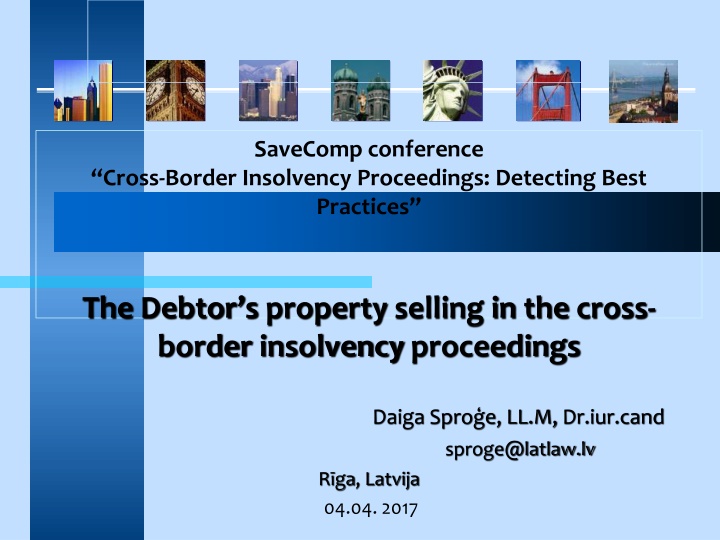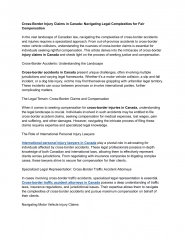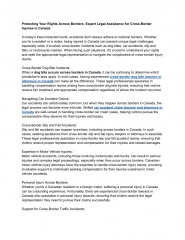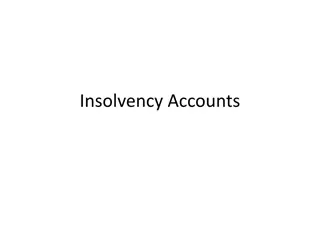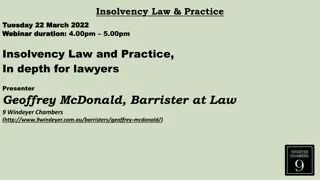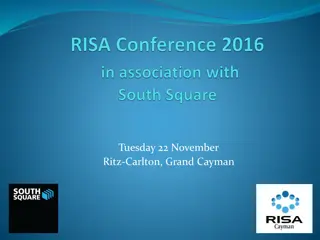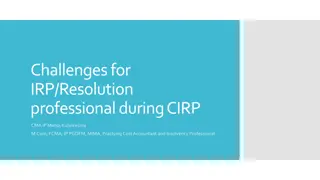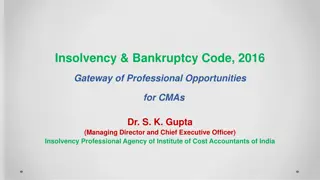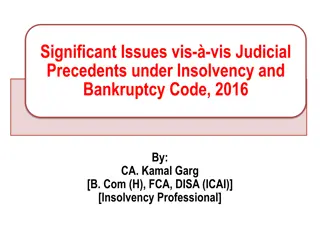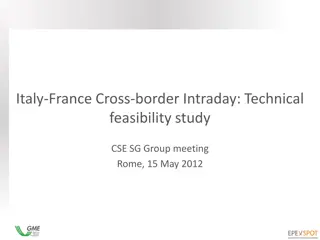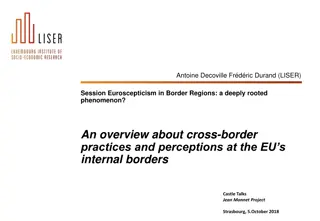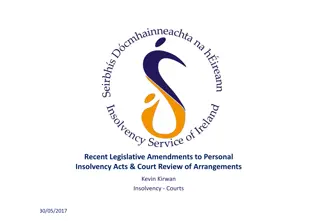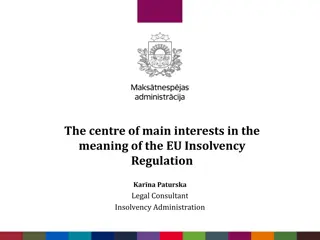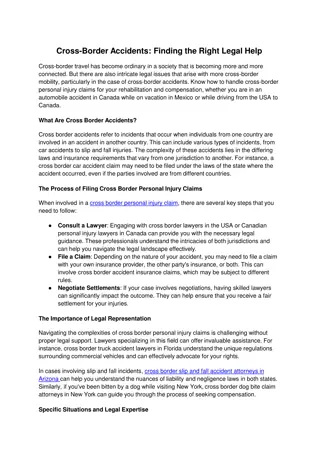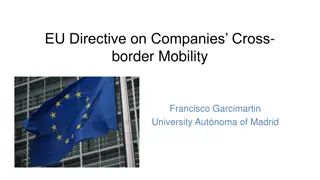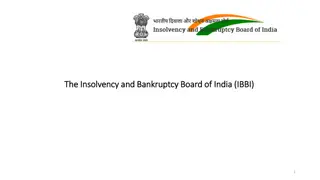Cross-Border Insolvency Proceedings: Best Practices in Selling Debtor's Property
A comprehensive look at cross-border insolvency proceedings, exploring voluntary and involuntary bankruptcies, EU regulations, and best practices in selling debtor's property. Discussions include Council Regulation (EC) No. 1346/2000 and Regulation (EU) 2015/848, with insights into legal measures protecting creditors' interests and renewing insolvency subjects' paying capacity.
Download Presentation

Please find below an Image/Link to download the presentation.
The content on the website is provided AS IS for your information and personal use only. It may not be sold, licensed, or shared on other websites without obtaining consent from the author.If you encounter any issues during the download, it is possible that the publisher has removed the file from their server.
You are allowed to download the files provided on this website for personal or commercial use, subject to the condition that they are used lawfully. All files are the property of their respective owners.
The content on the website is provided AS IS for your information and personal use only. It may not be sold, licensed, or shared on other websites without obtaining consent from the author.
E N D
Presentation Transcript
riga_ville_pont SaveComp conference Cross-Border Insolvency Proceedings: Detecting Best Practices The Debtor s property selling in the cross- border insolvency proceedings Daiga Spro e, LL.M, Dr.iur.cand sproge@latlaw.lv R ga, Latvija 04.04. 2017
The Insolvency Proceedings Definition: a complex of the measures of legal character, in order to protect the interests of the body of creditors, and, if possible to renew paying capacity of the insolvency subject Voluntary insolvency - is a bankruptcy proceeding initiated by the debtor; Involuntary insolvency - is a bankruptcy proceeding initiated by the creditor to force the debtor to declare bankruptcy or be legally declared bankrupt
EU Cross-border insolvency proceedings The insolvency proceeding gets the cross-border status in case, if a debtor has assets and/or creditors in more then one Member State In order to achieve the aim of improving the effectiveness of insolvency proceedings having cross- border effects, it is necessary, and appropriate, that the provisions on jurisdiction, recognition and applicable law in this area should be contained in a Union measure which is binding and directly applicable in all Member States
4 Regulation on Insolvency Proceedings (I) Council Regulation (EC) No 1346/2000 of 29 May 2000 on insolvency proceedings (thereinafter Regulation I), which is in force since 31st May of 2002, but in Latvia since May 1st of 2004 Regulation I applies to insolvency proceedings, whether the debtor is a natural person or a legal person, a trader or an individual Insolvency proceedings concerning insurance undertakings, credit institutions, investment undertakings should be excluded from the scope of this Regulation I
Regulation on Insolvency Proceedings (II) European Parliament and the Council of the European Union, having regard to the proposal from the European Commission, have adopted Regulation (EU) 2015/848 of 20 May 2015 on Insolvency proceedings (hereinafter Regulation II) The provisions of Regulation II shall apply only to insolvency proceedings opened after June 26 of 2017
The Debtors Property The property of a insolvent debtor is the immovable property and moveable property of a debtor, including: funds; the property recovered in accordance with the national Law; fruits that have been acquired from the property of the debtor during the insolvency proceedings of a legal person; and other property legally acquired during the insolvency proceedings of a insolvent person (Insolvency Law of the Republic of Latvia, 2010:93)
The Debtors Property Selling (I) Each Member State s normative acts intend different methods of sale of the property of a debtor coordinated with the secured creditor: with an auction; without an auction The problems arise at the moment when insolvency proceedings administrator establishes the immovable property in the different Member State and proceedings are mostly related to the selling procedure due to the law of the Member State where the immovable property is located The frontal problem is the lack of the information; therefore, insolvency practitioner does not get the information about possible property in different Member States or outside the European Union
The Debtors Property Selling (II) What happens in the insolvency proceedings State, where the immovable property is possible to be sold only on the public auction? The insolvency administrator finds out that in this Member State it is possible to sell the property at an auction, but the problem is that such auction can be organized only through special electronic means and only local insolvency administrators have an access to such auction system To resolve the mentioned problem it would be necessary to provide that all property selling procedures by public auction should be organized by using electronic means within the European Union (Latvian insolvency administrators sell debtor s property in the electronic auction site www.izoles.ta.gov.lv since 01.01.2016)
The Debtors Property Selling (III) Another administrators cannot or it is difficult to sell the immoveable property, which is located in another Member State, would be to permit to open the secondary proceedings at the Member State, where property is located, without any requirement for establishment within the territory of that Member State resolution to the problem that insolvency Necessary to consummate Regulation II Article 3 (2) and provide that in case it is impossible or complicated to sell the immoveable property, which is located in another Member State, the courts can open the secondary insolvency proceedings (run in parallel to the main insolvency proceedings)
10 Transparency of Cross-border Insolvency Proceedings (I) The frontal problems concerning the procedural framework for determining jurisdiction is lack of information about the possible property of debtor in the other Member State or somewhere else At this moment insolvency administrator can find the information about the debtor s property in the local public registers Not always the debtor performs duties in good faith
11 Transparency of Cross-border Insolvency proceedings (II) Regulation II provides for the interconnection of the Insolvency Registers of each Member State via the European e-Justice Portal (www.e-justice.europa.eu) The certain minimum information relating to the insolvency proceedings should be published in an electronic register and should be available to the public free of charge This provision is in force since June 26th of 2016 and helps insolvency administrators to find out the necessary information about the each Member State local legislation and therefore debtor s property selling methods By analogy with the Insolvency Registers in order to promote the honouring of the debtor s obligations it should be necessary to include in the Regulation II a provision ensuring that Land register offices or similar institutions in all Member states interconnect in one Land Register that would be available to the insolvency administrators within the EU
12 THANK YOU VERY MUCH! Daiga Spro e, Dr.iur.cand. Turiba University, Faculty of Law, lecturer (Latvia)
